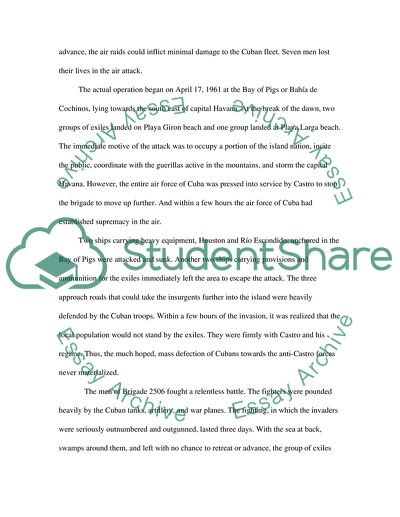Cite this document
(The Bay of Pigs Invasion Research Paper Example | Topics and Well Written Essays - 3250 words, n.d.)
The Bay of Pigs Invasion Research Paper Example | Topics and Well Written Essays - 3250 words. Retrieved from https://studentshare.org/history/1726247-foreign-policy
The Bay of Pigs Invasion Research Paper Example | Topics and Well Written Essays - 3250 words. Retrieved from https://studentshare.org/history/1726247-foreign-policy
(The Bay of Pigs Invasion Research Paper Example | Topics and Well Written Essays - 3250 Words)
The Bay of Pigs Invasion Research Paper Example | Topics and Well Written Essays - 3250 Words. https://studentshare.org/history/1726247-foreign-policy.
The Bay of Pigs Invasion Research Paper Example | Topics and Well Written Essays - 3250 Words. https://studentshare.org/history/1726247-foreign-policy.
“The Bay of Pigs Invasion Research Paper Example | Topics and Well Written Essays - 3250 Words”, n.d. https://studentshare.org/history/1726247-foreign-policy.


